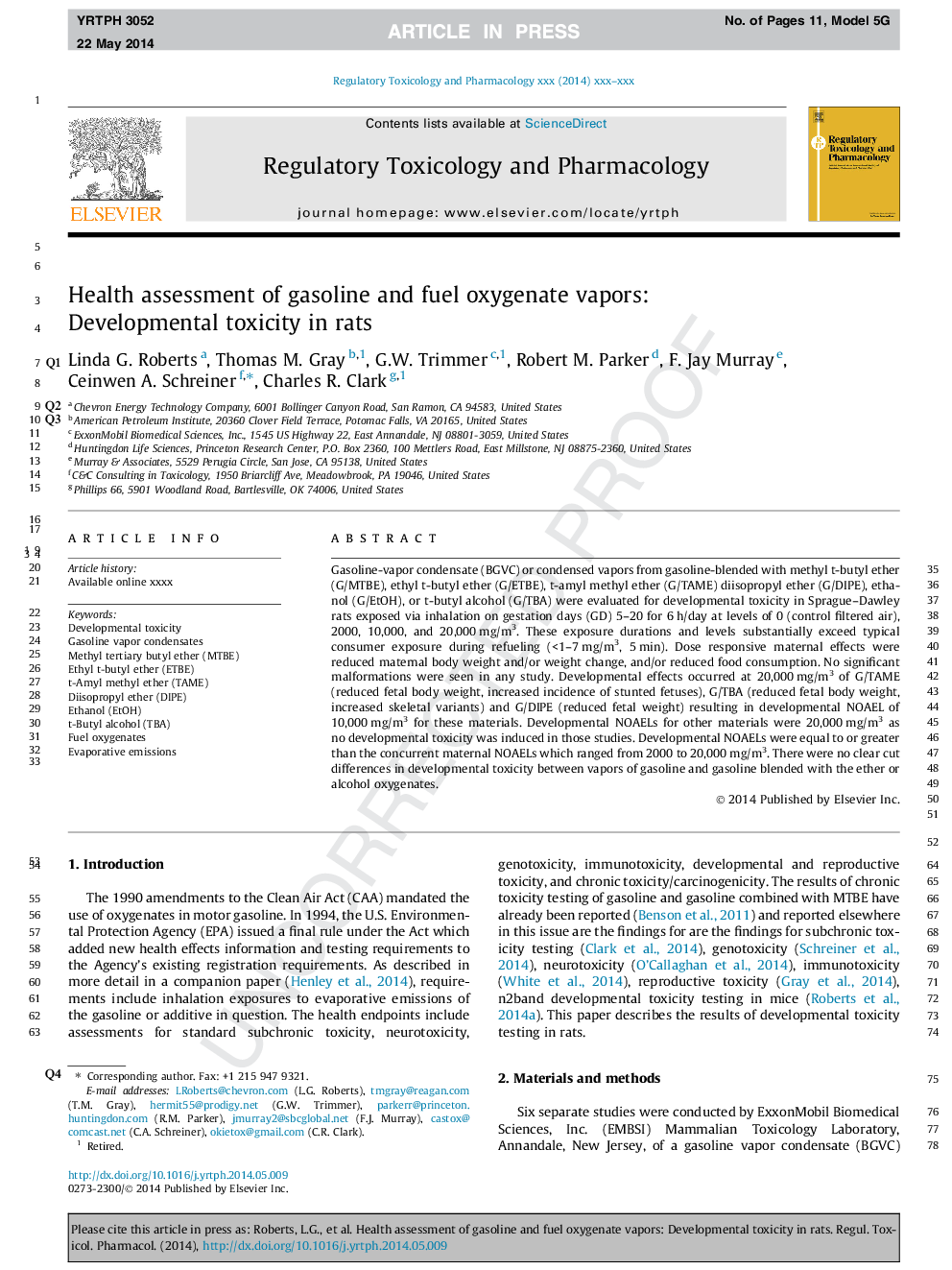| Article ID | Journal | Published Year | Pages | File Type |
|---|---|---|---|---|
| 5856993 | Regulatory Toxicology and Pharmacology | 2014 | 11 Pages |
Abstract
Gasoline-vapor condensate (BGVC) or condensed vapors from gasoline blended with methyl t-butyl ether (G/MTBE), ethyl t-butyl ether (G/ETBE), t-amyl methyl ether (G/TAME) diisopropyl ether (G/DIPE), ethanol (G/EtOH), or t-butyl alcohol (G/TBA) were evaluated for developmental toxicity in Sprague-Dawley rats exposed via inhalation on gestation days (GD) 5-20 for 6Â h/day at levels of 0 (control filtered air), 2000, 10,000, and 20,000Â mg/m3. These exposure durations and levels substantially exceed typical consumer exposure during refueling (<1-7Â mg/m3, 5Â min). Dose responsive maternal effects were reduced maternal body weight and/or weight change, and/or reduced food consumption. No significant malformations were seen in any study. Developmental effects occurred at 20,000Â mg/m3 of G/TAME (reduced fetal body weight, increased incidence of stunted fetuses), G/TBA (reduced fetal body weight, increased skeletal variants) and G/DIPE (reduced fetal weight) resulting in developmental NOAEL of 10,000Â mg/m3 for these materials. Developmental NOAELs for other materials were 20,000Â mg/m3 as no developmental toxicity was induced in those studies. Developmental NOAELs were equal to or greater than the concurrent maternal NOAELs which ranged from 2000 to 20,000Â mg/m3. There were no clear cut differences in developmental toxicity between vapors of gasoline and gasoline blended with the ether or alcohol oxygenates.
Keywords
Related Topics
Life Sciences
Environmental Science
Health, Toxicology and Mutagenesis
Authors
Linda G. Roberts, Thomas M. Gray, Gary W. Trimmer, Robert M. Parker, F. Jay Murray, Ceinwen A. Schreiner, Charles R. Clark,
